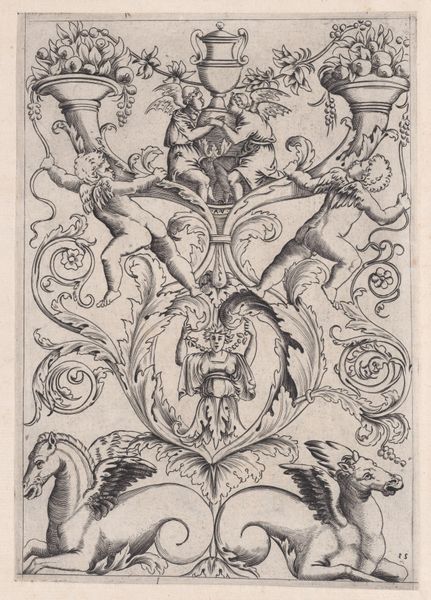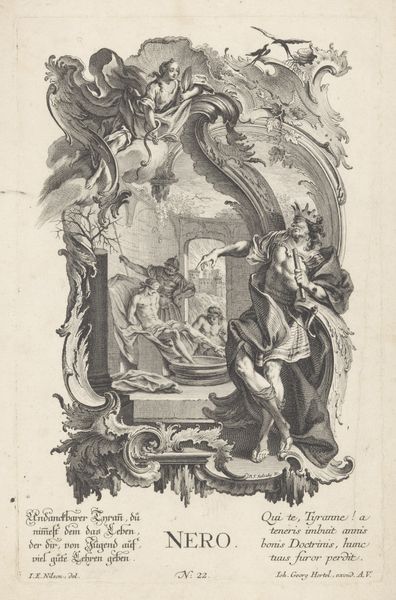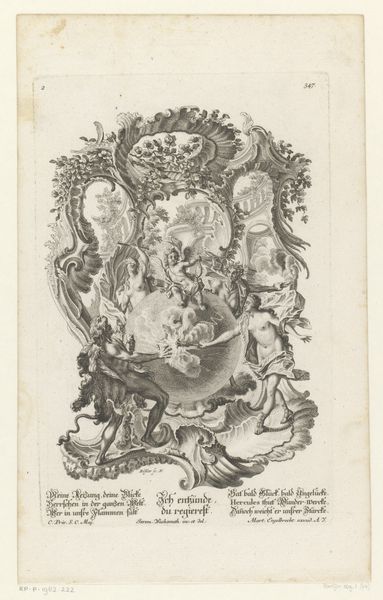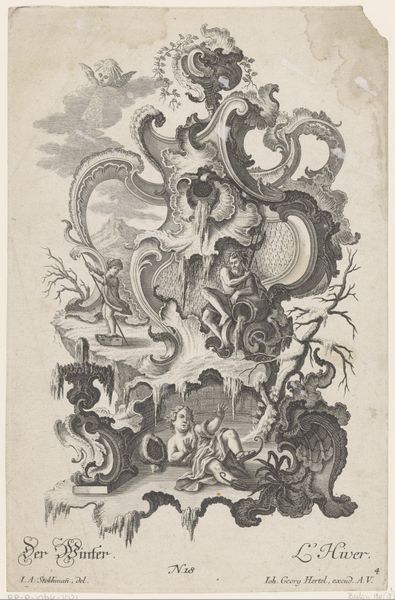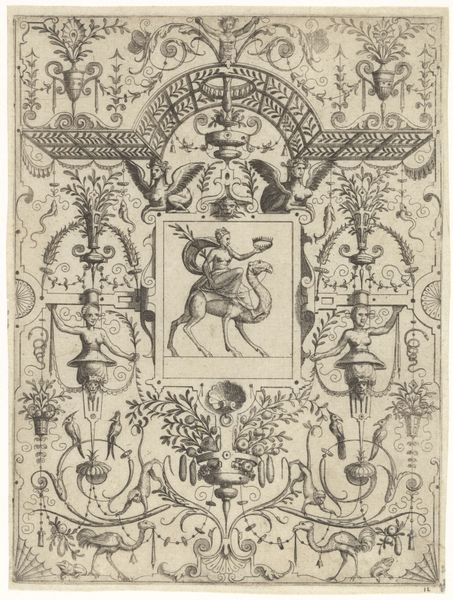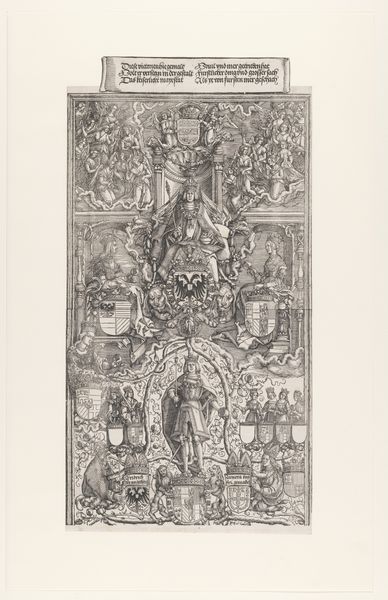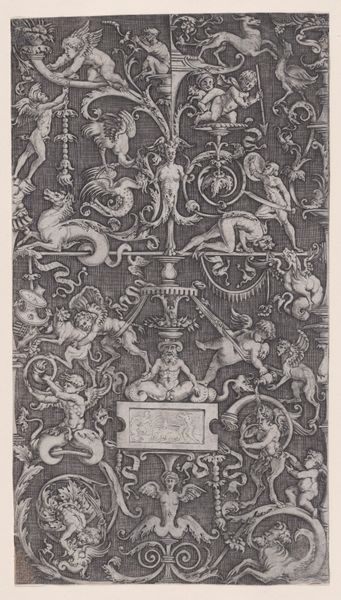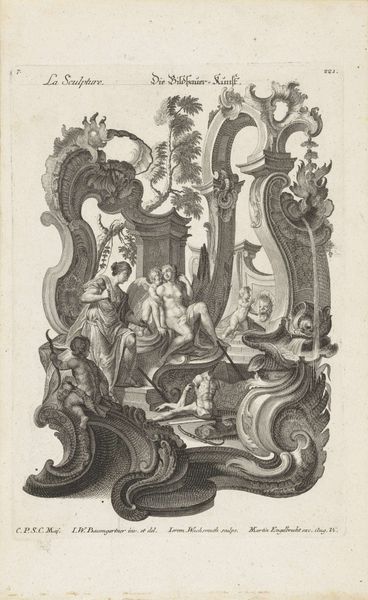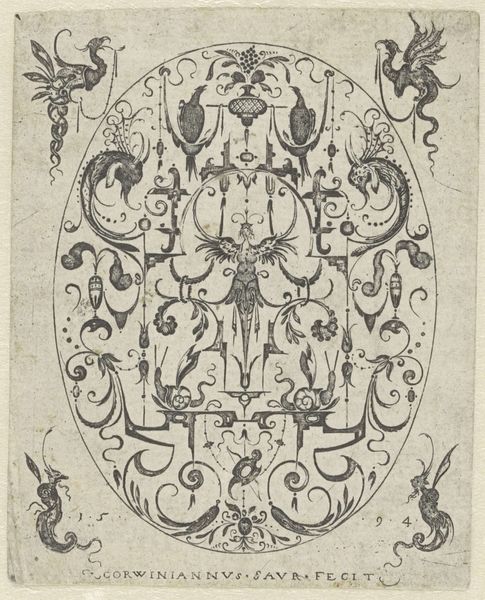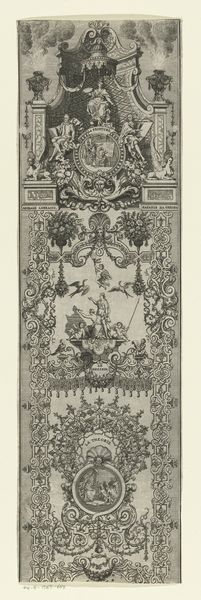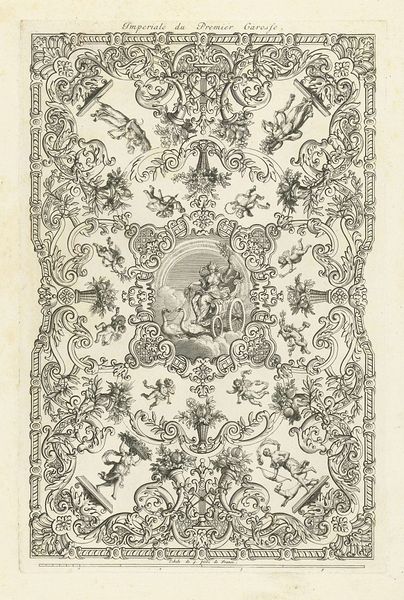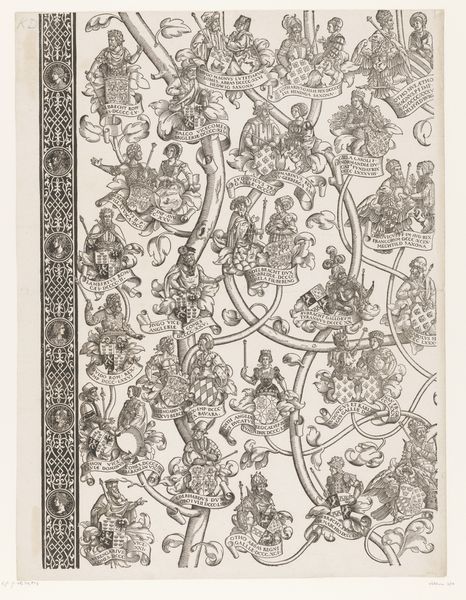
engraving
#
allegory
#
baroque
#
figuration
#
history-painting
#
engraving
Dimensions: height 334 mm, width 217 mm
Copyright: Rijks Museum: Open Domain
Curator: What an intriguing find. This is “Water,” an engraving dating back to the period between 1718 and 1785, created by Johann Balthasar Gutwein. Editor: It strikes me as incredibly intricate, almost dizzying with the level of detail crammed into one space. It has a definite baroque sensibility. The light and shadow create a dynamic sense of movement, although the narrative, initially, remains rather obscured by ornamentation. Curator: Absolutely, the density speaks to the conventions of the era. The layering of allegorical figures and symbols tells a story that's also deeply embedded in its socio-political context. These types of allegorical works were used to communicate messages about power and dominion, especially royal authority. Editor: Focusing on its materiality as an engraving, you see a painstaking labour process, forcing me to consider what that meant during Gutwein's time. What kind of workshop facilitated this process and what kind of skilled labour? I'm looking at not only high art but also at craft, asking questions about labour, technique and circulation. Curator: Indeed, and considering the probable reproduction and circulation of engravings at this time, what statement was being broadcast widely and who was consuming it. You can view "Water" as being part of the grand theater of power. Water being critical for trade and passage routes at the time. Editor: Thinking about water more literally though, what material trade routes existed because of "Water"? How were they managed and what effect does it have when pictorially it gets reduced to allegory. The raw material production must have touched so many. Curator: Good questions! The symbolic layering would obscure, perhaps deliberately, those very economic relationships on which so much power was being built. It’s this tension that gives works like this enduring interest. Editor: Well, seeing the process of production behind even the most extravagant of ornamental images keeps it vital. And this, too, deserves attention.
Comments
No comments
Be the first to comment and join the conversation on the ultimate creative platform.
